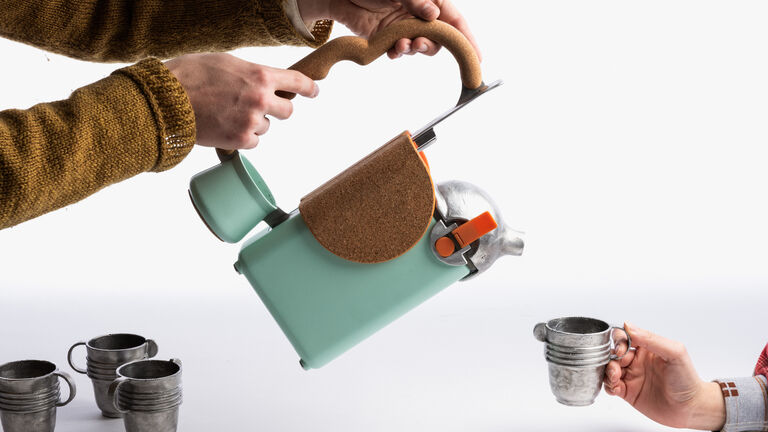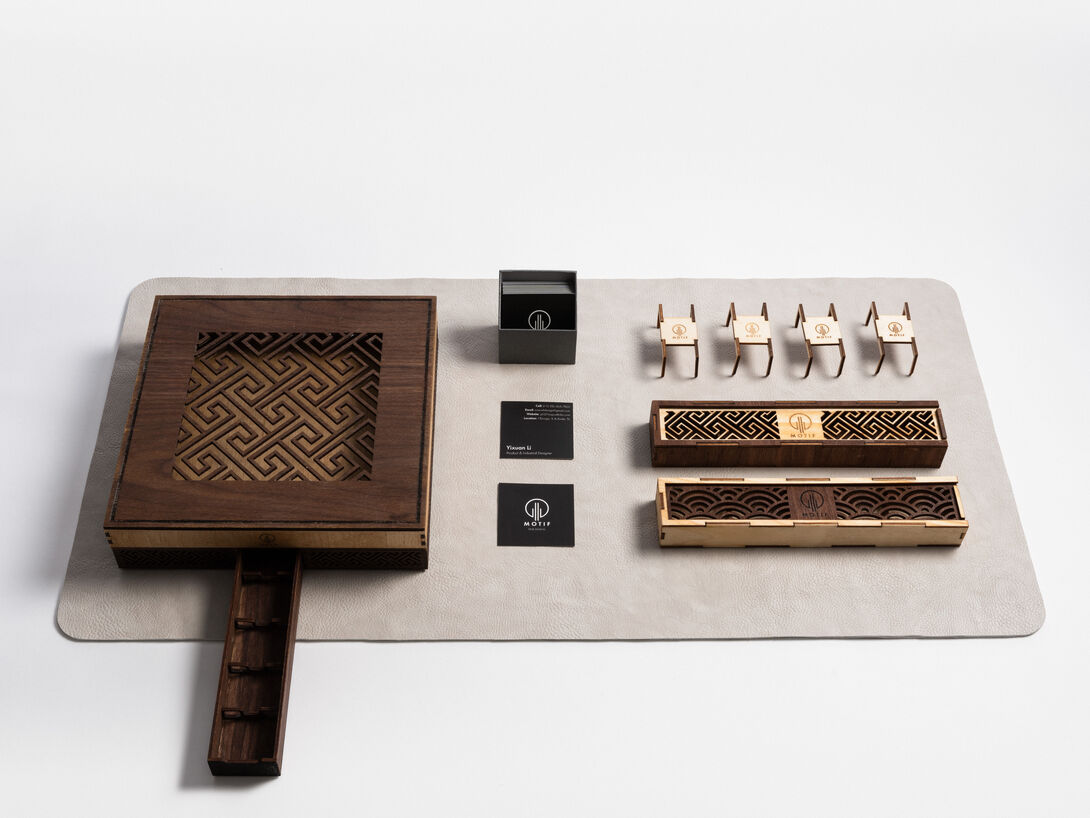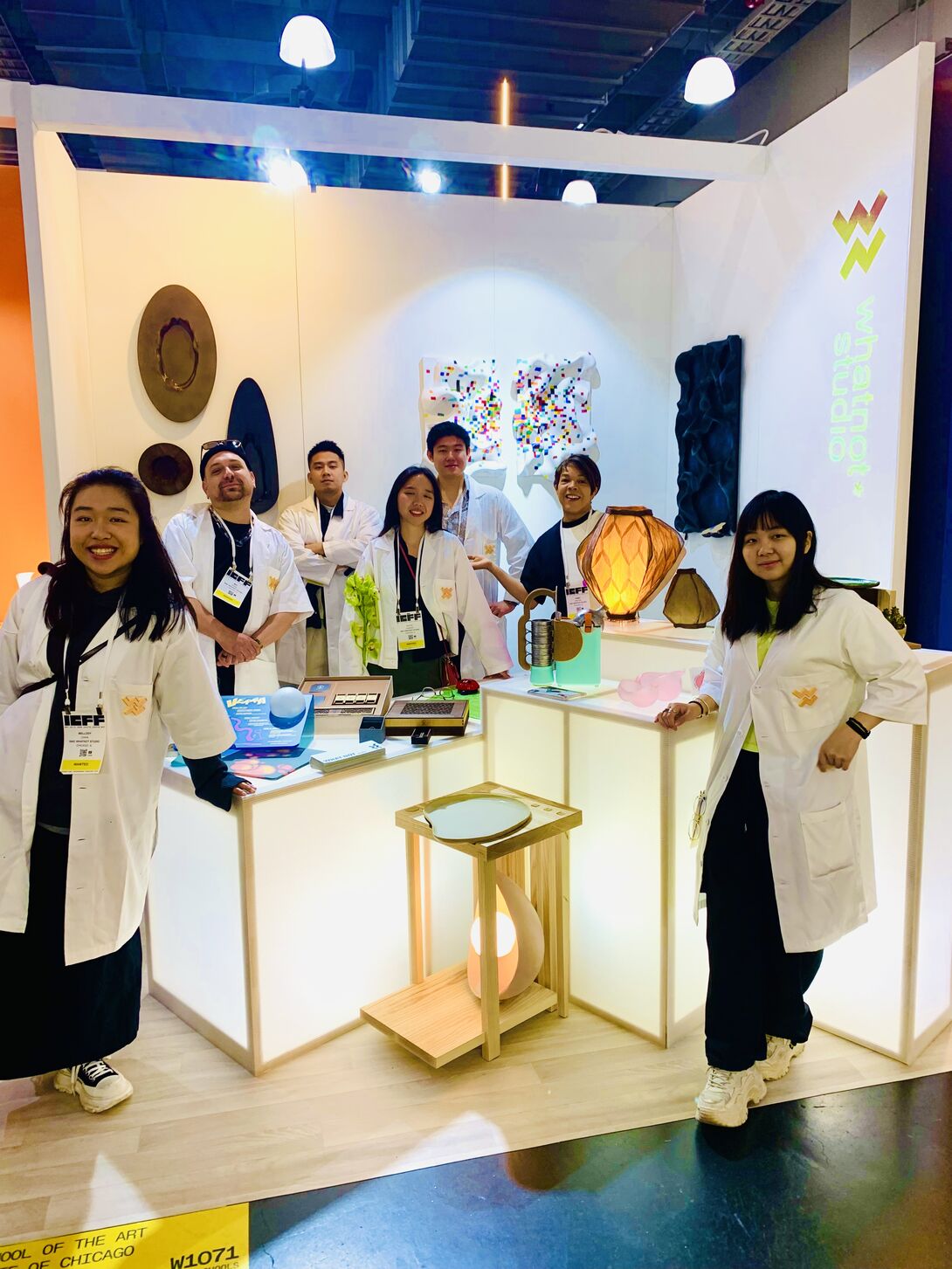
Credit: Cole Glover
Whatnot Class Brings Student Projects from Idea to Actualization
Corn husk lamps. A minimalist thermos with four attached cups. A tabletop toy that mitigates mealtime overstimulation in children. These student projects, and more, were created during the most recent session of the School of the Art Institute of Chicago’s (SAIC) Whatnot Studio. The class allows students to experience all the stages of product design, from ideation to production.
“I never say no to any of my ideas.” said Senior Lecturer Tommy Walton, who taught the spring 2024 Whatnot Studio course, which is housed within the Department of Architecture, Interior Architecture, and Designed Objects. In his classroom, the same rule applies. In collaboration with Chilab Studio’s Ben Stagl, Walton mentored a group of ambitious student designers from diverse artistic backgrounds. For each iteration of the two-semester-long class, faculty members handpick a prompt to stimulate students’ creativity. This year’s prompt is “taste.”
“I started cooking very early. That was just always part of my DNA, growing up Creole in the South,” said Walton, who has competed on multiple seasons of the reality show MasterChef. Chicago’s status as one of the epicenters of the world’s gastronomic scene also inspired the prompt. “Restaurants in Chicago are in fashion, and they’re the new runway. Restaurants have become the theatre, and the stage. Restaurants are now performance art,” said Walton.
Student Irsia Agha’s project, TIMLY (Touch Interactive Mealtime Learning for Youth) tackles electronic screen syndrome, a term describing the overstimulation in children from blue light screens. TIMLY, a silicone-based LED tabletop board, offers children a set of simple games that help them concentrate during mealtime, minimize blue light exposure, and facilitate cognitive development.
Working on TIMLY, Agha collaborated with students from Art and Technology / Sound Practices, Visual Communication Design, and the woodshop. "The ability to adapt and work alongside other people is the number one professional skill that you need in your career outside of the School. Whatnot prepares you for that," said Agha.
Cole Glover, an undergraduate student studying designed objects, describes his project—a shareable thermos—as an investigation of sharing and collective consumption. The object is made of aluminum, making it light and portable, and its set of four cups makes it easy to share your favorite beverage with anyone. The thermos’ minimalist design is deceivingly simple. Glover was faced with the challenge of designing custom latches and figuring out the temperature control. “For me, it is an opportunity to show off my ability to fully design and fabricate a technically adept prototype with actual materials. And then, I could use it as a launching point to start conversations with other people and start new projects,” said Glover.

Credit: Eason Li
Student Eason Li's designer utensil box.
“During COVID, product designers were not able to make things. We got stuck creating digital models and renderings. So for this class I really wanted to make something physical,” said Eason Li, a graduate student in the Department of Designed Objects. Fusing this year’s prompt with Chinese gastronomic culture, Li has spent the past two semesters developing a designer utensil box that includes a set of cutlery, a custom leather mat, napkins, and bespoke packaging. “Crafting the initial impression is crucial, a point we extensively discussed during critiques,” Li noted, underscoring the faculty's real-world experience and deep industry knowledge.
Xara Luna Bermudez, a transfer student from Colombia, echoes that sentiment. “I was drawn to this class because of the opportunity to fully develop a project,” she said. She focused on corn, a crop integral to both Colombian culture and Illinois agriculture. Through meticulous experimentation, Bermudez devised a process for transforming corn husks, a material typically deemed as waste, into a fiber suitable for lamp manufacturing. Bermudez combined natural fiber with copper and silk, enhancing its durability and structure. “It's always about pushing boundaries. Whenever I propose one idea, they ask me for 10 more,” Bermudez explained.

Whatnot Studio projects extend far beyond the classroom. In May, the cohorts traveled to New York to present their projects at the International Contemporary Furniture Fair 2024. Working as a design agency, the Whatnot students are responsible for designing and producing promotional materials, brand identity, business cards, and booth decorations. Beyond the benefits of publicity and networking, participating designers will compete for the title of the best project, which will be awarded a financial prize. "This provides a significant incentive for the students to truly excel and do their very best. They also have the opportunity to connect with mentors in their chosen fields and to meet all sorts of people. And oftentimes, they do meet future employers," said Walton.
For many students, the products developed in Whatnot Studio become the beginning of their design journey. “I feel like I'm just scratching the surface,” Bermudez said.
